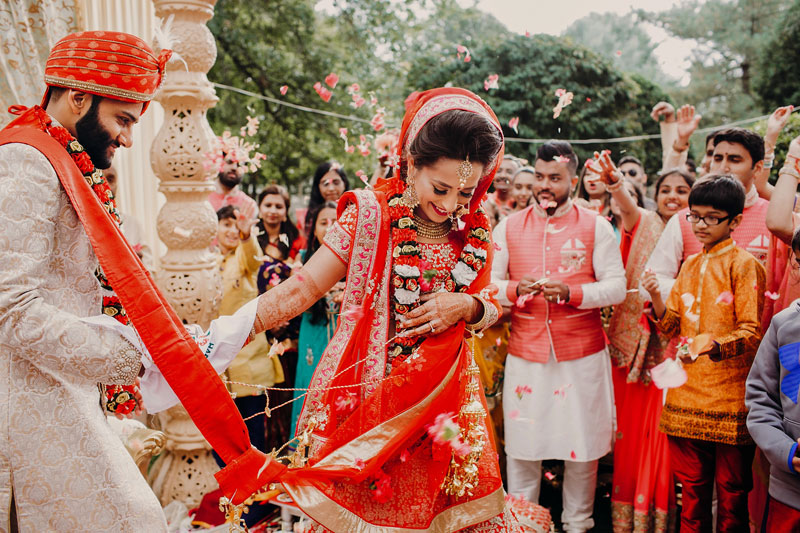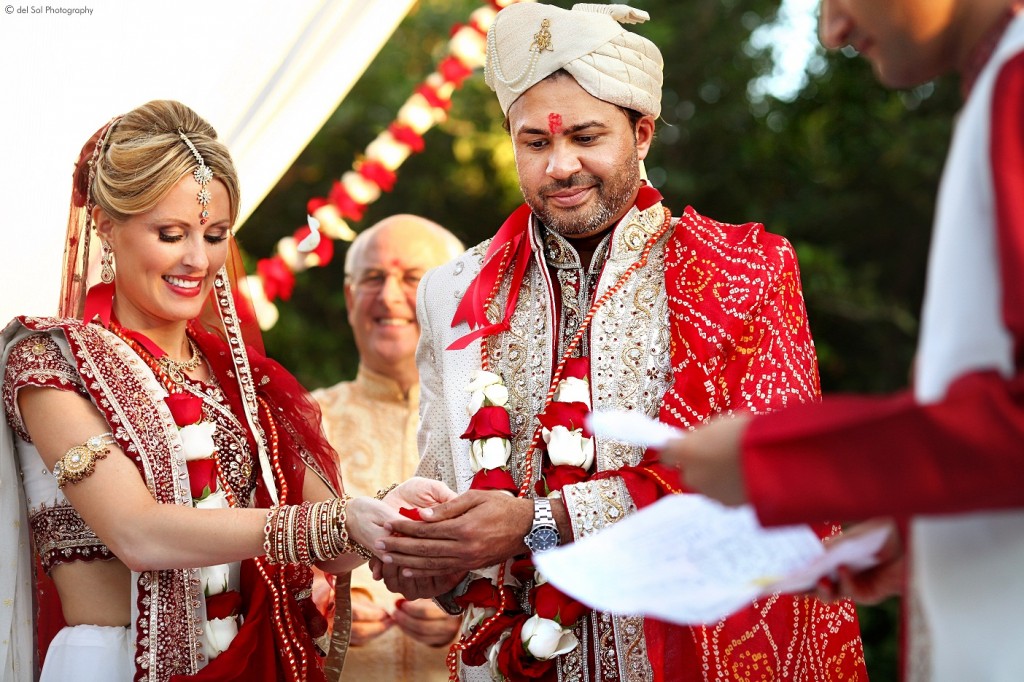How Much Do You Know About Hindu Wedding Traditions?

When many people in the Western world think about weddings, they really only think of a classic Western wedding. However, in the modern age, weddings of all styles have started to make a comeback. Whether you want to reconnect with your own Hindu culture or you just want to learn what other people do at their weddings, there are a number of interesting Hindu wedding traditions to learn. From traditions that may seem familiar to those that may seem completely alien, here are the most interesting Hindu marriage and wedding traditions.
Hindu Wedding Traditions Start With the Family
The family is extremely important in weddings around the world, and this religion is no different. Wedding traditions in Hinduism center largely around the idea that marriage is not just a meeting of two individuals; it’s a meeting of two families. In fact, arranged marriages were considered totally normal until fairly recent days, and some families continue to match brides and grooms based almost solely on astrology and familial compatibility. Many other families do semi-arranged marriages, where the parents may introduce the two to each other, but the choice is theirs in the end. Of course, with the influx of Bollywood-style romance movies, it’s become more acceptable for the bride and groom to choose their life-partner and marry someone they like.
The engagement may start with the parents, or it may start with the bride and groom. However, even if the engagement is born purely out of love, it’s expected that the bride and groom will take their families into account when they choose their future spouses.
An Important Hindu Wedding Tradition Centers Around the Engagement
Engagement traditions are extremely important in Hinduism. Usually, the groom and his family will partake in different ceremonies than the bride’s family, and some traditions will be undertaken together. However, even before all of these traditions take place, the stars are consulted to find the perfect wedding day. A priest will use the horoscopes of the bride and the groom to make decisions on facets directly related to Hinduism, such as when important rituals should be done and when the actual wedding should take place. This will usually be announced at the engagement party.
Fashion is a Key Part of Most Hindu Wedding Traditions
Weddings are a big deal in the Hindu tradition, and that’s why fashion is such a specific and important portion! The mehndi ritual takes place several days before the wedding. Henna is applied to the bride’s body, and the darker the color is, the more the groom loves his bride.
When it comes to the actual wedding, fashion and style vary widely between clans, locations, and even individuals. Traditions from North India are often very different from those in South India, and different familial traditions will often play a part in what the bride wears. Hindu wedding dress traditions may include either a traditional sari or a lehnga and may be seemingly very simple or incredibly and meticulously detailed. Regardless of the style that the bride has chosen, one thing is for sure — there will be many bright colors! Traditional red is usually used, although some areas prefer blue or ivory.
The Importance of Rituals in Hinduism is Evident in the Wedding Traditions
Hinduism is a very ritualistic religion, and that ritualism extends to a Hindu marriage as well. There are many important rituals in Hindu weddings starting from before the wedding is even finalized. As we are talking about the wedding ceremony, rituals are used to show religious devotion and a respect for tradition.
First are rituals that begin before the wedding even starts. More religiously-centered families will perform the Ganesh Poojan around a week before the wedding. This ritual invokes Lord Ganesh, who is the wise god in Hinduism, to help the wedding go smoothly. The day of the wedding, there may be a large party called the Baraat. In this colorful and exciting affair, the groom and his family will have a blast. They will have a massive party with songs and dances. Once the groom’s family has paraded to where the wedding will be taking place, the friends of the bride, parents, and other family members will greet them with various gifts.
Now it’s time for the actual ceremony, performed next to the wedding altar, or mandap. It starts with the Kanyadaan. This is a ceremony that looks similar to the Western tradition of walking down the aisle. The bride’s parents give their daughter to her husband. Then, a sacred fire is lit on the altar, and the Vivaah Homa is performed. This is a ritual of feeding the fire with herbs, rice, and clarified butter. The Hindu scriptures, also called the Vedas, is read in certain parts by both participants. These prayers express their love and devotion for their upcoming married life.
Another interesting stage of the wedding day is known as the Agni-Parikrama, Mangal Fera, or Pradakshina. The bride and groom walk either four or seven times around the mandap; in different traditions, each one of these rounds means something different. Then, they tie long pieces of their clothing together, and they take seven steps. Each step signifies an important commitment. The priest pronounces a holy benediction, and the couple finally and officially can call themselves a husband and wife.
The Western World Can Be Compatible With Hindu Wedding Traditions

Although it may seem that wedding traditions in Hinduism simply make a long, complicated list of rituals and rules, most couples understand how important they are from the cultural point of view and enjoy the process of following them as well. If you’re going to a Hindu wedding, don’t stress out about the differences — just appreciate them. Participants in a Hindu wedding take the spiritual aspect of a wedding very seriously, which is why there are many traditions that must be followed. It’s true that as Hindu people have moved outside of India and embraced non-Indian traditions, these types of extremely traditional weddings may be seen less often. However, it’s possible for Hindu people to mix traditional wedding customs and modern customs, or have a modern wedding with traditional influences. No matter what different Hindu people believe or practice, they can be part of the modern world just like participants in any other religion.